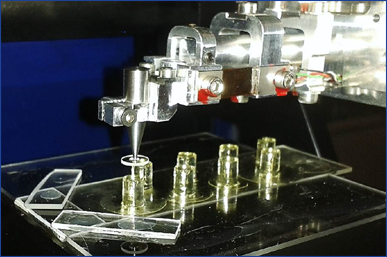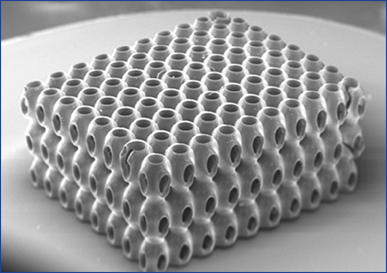|
BASALT®-N2 INDENT micro-forces instrument
for
measuring the viscoelastic behavior
of hydrogels and other biomaterials
WinWinTec's supplier Tetra developed a micro-forces indentation tester
for the specific purpose of describing the complex mechanical behavior
of biomaterials used in life science, mainly. As a matter of fact, these
materials show frequency-dependent viscoelastic behavior, and when characterizing
its properties, the physiological frequency range of possible stresses
(0.1 to 3 Hz) has to be taken into consideration.
Tetra's customer Institute for Bioprocessing and Analytical Measurement
Techniques (iba) recently published a study on the results of their
experiment consisting of a dynamic force measurement (indentation and
relaxation) and its evaluation. In this type of indentation measurement,
the test piece is compressed vertically by a force up to a maximum of
0.5 N or by 20% of the height of the piece. The force was measured at
a constant Z position for 300 seconds, during which time the relaxation
behavior of the piece was investigated. The sampling rate was 100 per
second. The raw data of the modulus/time curves were fitted with the
aid of evolutionary algorithms, and the relaxation time spectrum was
derived from the data gained this way.
BASALT®-N2 INDENT made by TETRA, with a 1N force sensor, was
used as the measuring system. A circular plate with a diameter of 6
mm was attached to it in order to apply a force to the entire surface
of the cylindrical test piece, which had dimensions of d = 5.5 mm, l
= 6 mm.

Experimental set-up: BASALT®-N2 INDENT
and test pieces
The investigations confirmed the initially formulated thesis that the
incorporation of mono-functional precursors (lactide and caprolactone
mixtures / LCMs) could specifically adjust the viscoelastic behavior
over several orders of magnitude. Increasing the proportion of mono-functional
LCMs increased the viscous proportion up until structural integrity
was lost (100% mono-functional = no cross-linking agent). The recording
of the measured values and the adjustable force range of the BASALT®-N2
INDENT are ideally suited for the systematic investigation of the viscoelastic
behaviour of biomaterials and hydrogels.

Scaffold with the polymer platform which
was investigated, structured by two-photon polymerization
|













